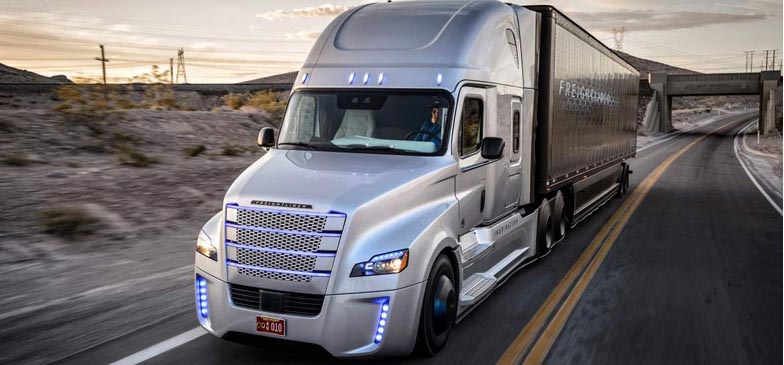Self-Driving Semi Trucks - The Good & The Bad For Drivers
Self-Driving Trucks Are Here
The first self-driving commercial truck licensed to drive on the U.S. public highways has hit the road in Nevada. But the question remains - is this a good or bad thing? And perhaps more importantly, what does it mean for the future of truck driving jobs?
Unveiling the Self-Driving Freightliner Truck
From the Freightliner Newsoom:
"In a spectacular evening ceremony at Hoover Dam, Daimler Trucks North America (DTNA) unveiled the Freightliner Inspiration Truck to several hundred international news media, trucking industry analysts and officials.
The Freightliner Inspiration Truck is the first licensed autonomous commercial truck to operate on an open public highway in the United States. Developed by engineers at DTNA, it promises to unlock autonomous vehicle advancements that reduce accidents, improve fuel consumption, cut highway congestion, and safeguard the environment.
"Putting the Freightliner Inspiration Truck on the road is an historic day for Daimler Trucks and the North American trucking industry," said Dr. Wolfgang Bernhard, Member of the Board of Management of Daimler AG Daimler Trucks & Buses. "Our team has done a marvelous job in bringing this breakthrough technology to the road."
Still In Testing
Make no mistake about it, the Freightliner Inspiration is a test vehicle and will be for quite some time. While the makers are confident it’s safe for public roads, and the Nevada DMV agrees - a few more million test miles will need to be recorded if it's going to become a widespread phenomenon. This includes hours and hours of testing in a wide variety of locales and conditions (snow, rain, extreme temperatures), before it’s ready to offer even this very limited autonomous capability to any customers. This is expected to take at least a decade.

Good for Truck Drivers
A self-driving semi truck definitely has an upside for truck drivers. Not only could it make it easier to become a truck driver (helping with driver shortage), it could also create a safer and more appealing work environment. A truck that can drive itself means more time for the driver to rest. With driver fatigue being one of the leading causes of accidents among truckers, this is definitely a good thing. A machine also doesn't become distracted, tired, stressed or angry with other drivers. Again, this could mean less accidents and more productivity for the driver. Overall, a self-driving truck means more time for the driver to do the things he/she wants to do; creating a happier, more alert, and better performing driver.
Bad for Truck Drivers
As with any new technology, there are potential downsides and a self-driving semi truck is no exception. Early on, there has already been a lot of missunderstanding surrounding the self-driving trucks and mixed emotions from the trucking community. Many drivers feel it will ruin the industry and create lazy/unknowledgeable drivers. Others think the new technology will add another layer of complexity to the driver's job. Controversial questions come up such as: who is responsible in an accident in which the truck is driving itself? What does this mean for the Hours of Service (HOS) rule? What happens if the "machine" driving the truck fails and the driver is injured? These questions and concerns certainly have the potential to create some muddy waters and leave a bad taste in the mouth of truckers everywhere.

Truck Driving Jobs - Is This The End?
There will always be a need for a licensed driver behind the wheel of a big rig and truck driving jobs will always need to be filled. No matter how many advances are made in technology, there are just some things a machine can't do. Things like stop to fill up with gas, perform a complete pre-trip inspection, drop landing gear, open trailer doors, change lights that may go out, properly handle adverse weather conditions...the list goes on.
This article cites, "If the truck encounters a situation it can’t confidently handle, like heavy snow that covers lane lines, it will alert the human that it’s time for him to take over, via beeps and icons in the dashboard. If the driver doesn’t respond within about five seconds, the truck will slow down gradually, then stop." So, while some things have been thought through, there are still some pretty clear limitations and other things that cannot be predicted. Much like a pilot must be present on a commercial airplaine, a licensed CDL driver will always need to be onboard a self-driving semi truck.
Looking for a Truck Driving Job?
Getting started is easy. Just take a few moments to tell us about yourself in our secure online application. This will let you schedule a time to speak with a representative from Driver Solutions about the training and job opportunities in your area. It's that simple, so go ahead and apply now!
